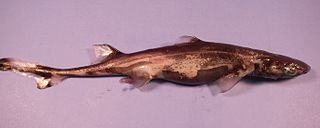The metabolic theory of ecology (MTE) is an extension of Metabolic Scaling Theory and Kleiber's law. It posits that the metabolic rate of organisms is the fundamental biological rate that governs most observed patterns in ecology. MTE is part of a larger set of theory known as metabolic scaling theory that attempts to provide a unified theory for the importance of metabolism in driving pattern and process in biology from the level of cells all the way to the biosphere.

Nepenthes gracilis, or the slender pitcher-plant, is a common lowland pitcher plant that is widespread in the Sunda region. It has been recorded from Borneo, Cambodia, Peninsular Malaysia, Singapore, Sulawesi, Sumatra, and Thailand. The species has a wide altitudinal distribution of 0 to 1100 m above sea level, although most populations are found below 100 m and plants are rare above 1000 m. Despite being a widespread plant, natural hybrids between N. gracilis and other species are quite rare.

Torulaspora delbrueckii is a ubiquitous yeast species with both wild and anthropic habitats. The type strain of T. delbrueckii is CBS 1146T, equivalent to CLIB 230 or ATCC 10662, etc.. The type strain of T. delbrueckii CBS 1146 T was recently sequenced, and is composed of 8 chromosomes in addition to a mitochondrial genome.

Etmopterus is a genus of lantern sharks in the squaliform family Etmopteridae. They are found in deep sea ecosystems of the Atlantic, Indian and Pacific Oceans.

The Ustilaginomycotina is a subdivision within the division Basidiomycota of the kingdom Fungi. It consists of the classes Ustilaginomycetes and Exobasidiomycetes, and in 2014 the subdivision was reclassified and the two additional classes Malasseziomycetes and Moniliellomycetes added. The name was first published by Doweld in 2001; Bauer and colleagues later published it in 2006 as an isonym. Ustilagomycotina and Agaricomycotina are considered to be sister groups, and they are in turn sister groups to the subdivision Pucciniomycotina.

Ecological speciation is a form of speciation arising from reproductive isolation that occurs due to an ecological factor that reduces or eliminates gene flow between two populations of a species. Ecological factors can include changes in the environmental conditions in which a species experiences, such as behavioral changes involving predation, predator avoidance, pollinator attraction, and foraging; as well as changes in mate choice due to sexual selection or communication systems. Ecologically-driven reproductive isolation under divergent natural selection leads to the formation of new species. This has been documented in many cases in nature and has been a major focus of research on speciation for the past few decades.

Noteosuchus is an extinct genus of basal rhynchosaur known from the earliest Triassic deposits of Eastern Cape Province, South Africa. It was first named by David Meredith Seares Watson in 1912 and the type species is Eosuchus colletti. The generic name Eosuchus is preoccupied by the generic name of Eosuchus lerichei Dollo, 1907, a gavialoid crocodilian known from northern France. Thus, an alternative generic name, Noteosuchus, was proposed by Robert Broom in 1925. The generic name erected by Broom (1925) is a compound, meaning "Not Eosuchus", while "Eosuchus" is derived from the name of Eos, the goddess of the dawn in Greek mythology, and suchus, Latinized from the Greek souchos, an Egyptian crocodile god, thus meaning "dawn crocodile". The specific name, colletti, honors Mr. Collett for the discovery of the holotype and only known specimen.

Lemurs' Park is a small botanical garden and lemur reserve covering 5 ha, and is located 22 km (14 mi) southwest of Antananarivo, Madagascar. It was founded around 2000 by Laurent Amouric and Maxime Allorge. Most of its nine lemur species are free-ranging within the park, which also contains more than 70 of Madagascar's endemic plant species. The park is open to the public, offering guided tours as well as standard amenities, a gift shop, and a restaurant. Visitors can arrange transportation between downtown Antananarivo and Lemurs' Park on a private park shuttle.

Pain is an aversive sensation and feeling associated with actual, or potential, tissue damage. It is widely accepted by a broad spectrum of scientists and philosophers that non-human animals can perceive pain, including pain in amphibians.

Allochronic speciation is a form of speciation arising from reproductive isolation that occurs due to a change in breeding time that reduces or eliminates gene flow between two populations of a species. The term allochrony is used to describe the general ecological phenomenon of the differences in phenology that arise between two or more species—speciation caused by allochrony is effectively allochronic speciation.
Etlingera rosea is a monocotyledonous plant species described by Brian Laurence Burtt and Rosemary Margaret Smith. Etlingera rosea is part of the genus Etlingera and the family Zingiberaceae.
Plagiostachy's crocydocalyx is a monocotyledonous plant species first described by Karl Moritz Schumann, and given its current name by Brian Laurence Burtt and Rosemary Margaret Smith. Plagiostachys crocydocalyx is part of the genus Plagiostachys and the family Zingiberaceae. No subspecies are listed in the Catalog of Life.
Scaphochlamys polyphylla is a monocotyledonous plant species that was first described by Karl Moritz Schumann, and got its current name from Brian Laurence Burtt and Rosemary Margaret Smith. Scaphochlamys polyphylla is part of the genus Scaphochlamys and the family Zingiberaceae. No subspecies are listed in the Catalog of Life.
Linariantha is a monotypic genus in the plant family Acanthaceae. It was described by Brian Laurence Burtt and Rosemary Margaret Smith.
Aframomum atewae is a monocotyledonous plant species described by John Michael Lock and J.B. Hall. Aframomum atewae is part of the genus Aframomum and the family Zingiberaceae.
Aframomum cordifolium is a monocotyledonous plant species the family Zingiberaceae first described by John Michael Lock and JBHall.









